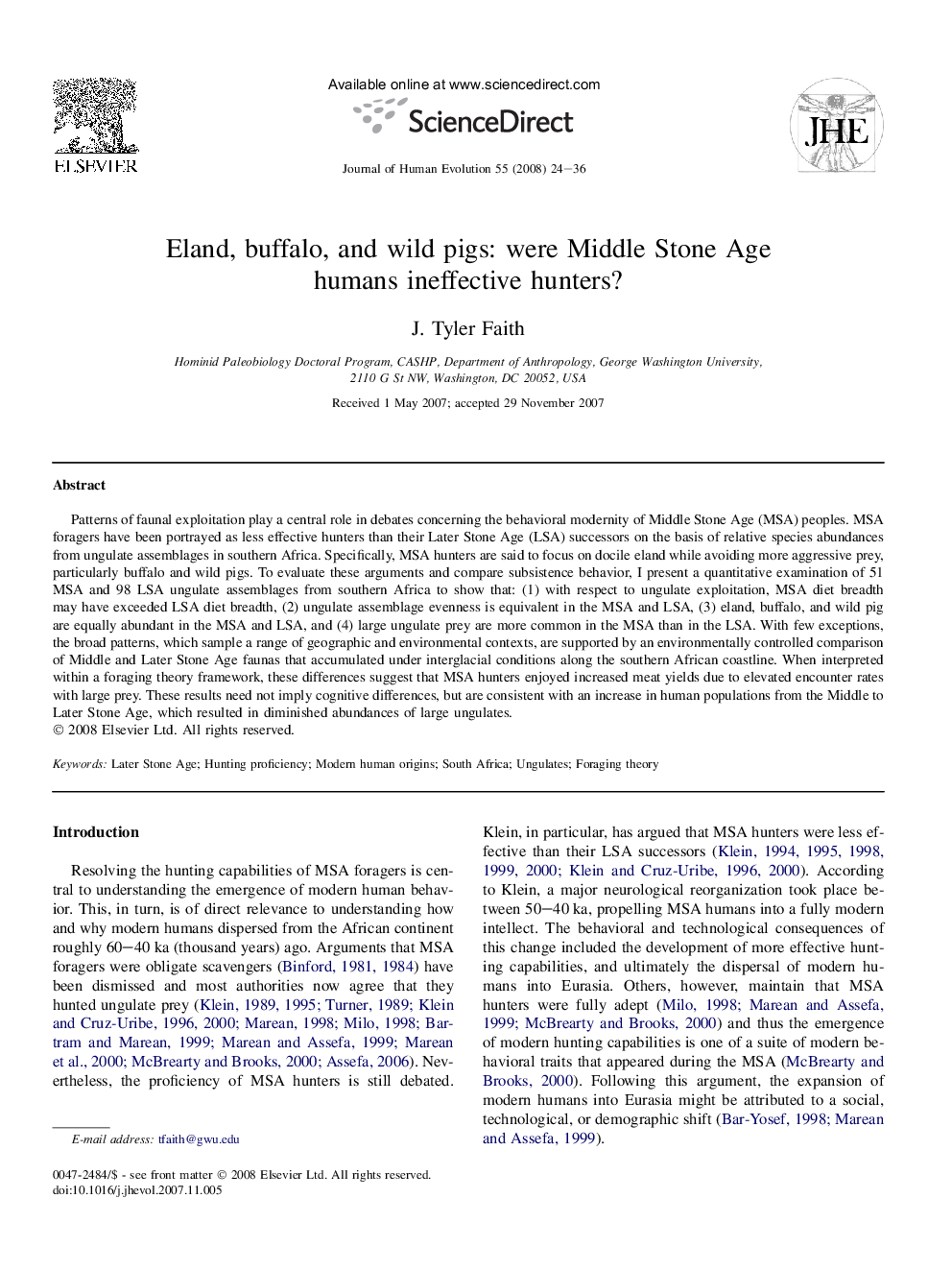| کد مقاله | کد نشریه | سال انتشار | مقاله انگلیسی | نسخه تمام متن |
|---|---|---|---|---|
| 4557334 | 1329547 | 2008 | 13 صفحه PDF | دانلود رایگان |

Patterns of faunal exploitation play a central role in debates concerning the behavioral modernity of Middle Stone Age (MSA) peoples. MSA foragers have been portrayed as less effective hunters than their Later Stone Age (LSA) successors on the basis of relative species abundances from ungulate assemblages in southern Africa. Specifically, MSA hunters are said to focus on docile eland while avoiding more aggressive prey, particularly buffalo and wild pigs. To evaluate these arguments and compare subsistence behavior, I present a quantitative examination of 51 MSA and 98 LSA ungulate assemblages from southern Africa to show that: (1) with respect to ungulate exploitation, MSA diet breadth may have exceeded LSA diet breadth, (2) ungulate assemblage evenness is equivalent in the MSA and LSA, (3) eland, buffalo, and wild pig are equally abundant in the MSA and LSA, and (4) large ungulate prey are more common in the MSA than in the LSA. With few exceptions, the broad patterns, which sample a range of geographic and environmental contexts, are supported by an environmentally controlled comparison of Middle and Later Stone Age faunas that accumulated under interglacial conditions along the southern African coastline. When interpreted within a foraging theory framework, these differences suggest that MSA hunters enjoyed increased meat yields due to elevated encounter rates with large prey. These results need not imply cognitive differences, but are consistent with an increase in human populations from the Middle to Later Stone Age, which resulted in diminished abundances of large ungulates.
Journal: Journal of Human Evolution - Volume 55, Issue 1, July 2008, Pages 24–36